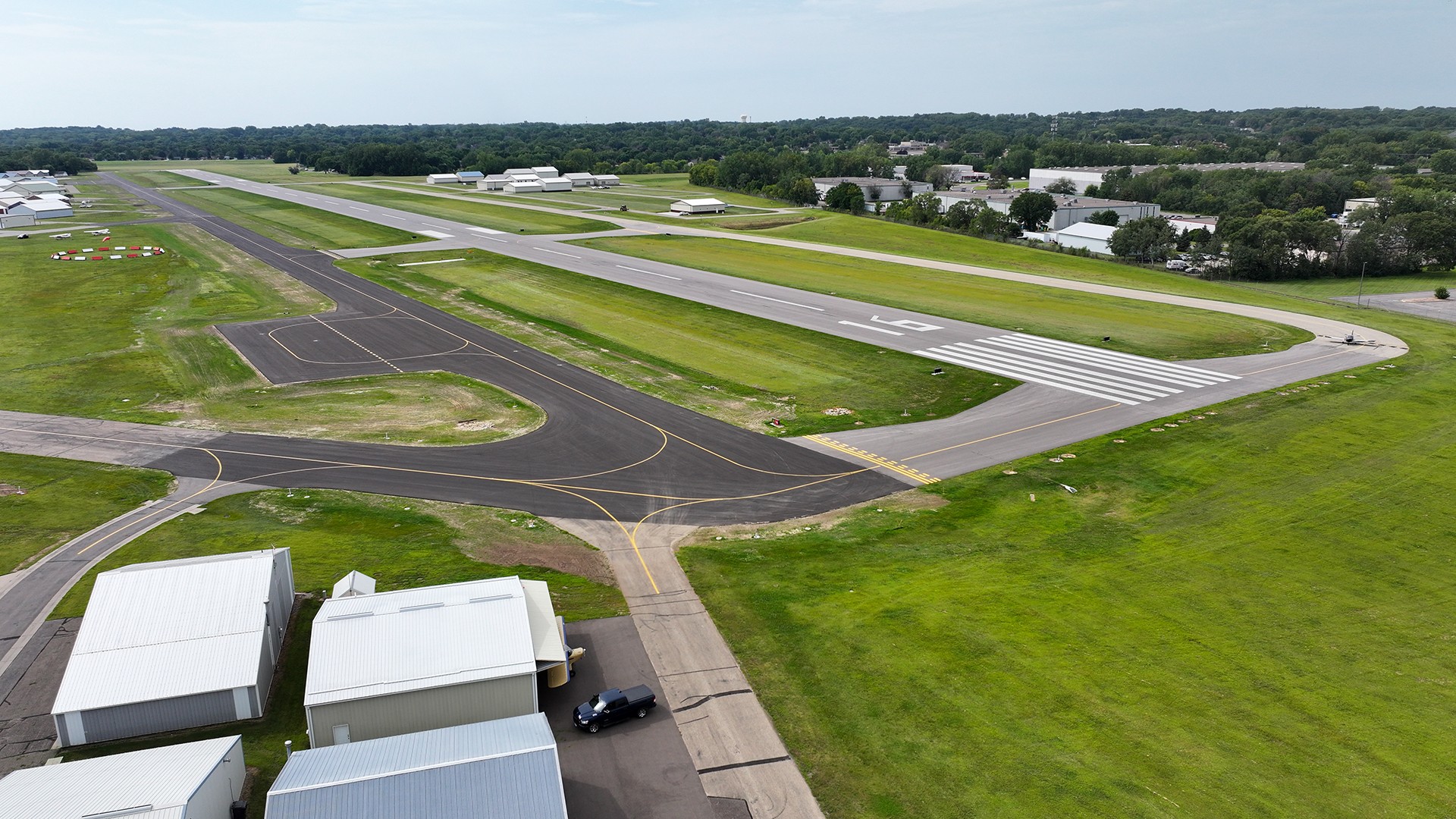Challenge
At South St. Paul Municipal Airport (SGS) in South St. Paul, Minnesota, Taxiway A serves as the primary full-length taxiway for the airport’s only runway, Runway 16/34. After more than 30 years in service, the pavement had deteriorated beyond its useful life and no longer met current FAA standards. This project was also the final segment in the airport’s broader effort to modernize critical airfield infrastructure, which began with the reconstruction of Runway 16/34 in 2022. With a range of users, including general aviation pilots, numerous businesses, and the Commemorative Air Force’s (CAF) historic fleet, the City needed to reconstruct the taxiway in a way that maintained operations, addressed future development goals, and met the needs of its diverse stakeholders.
Solution
In 2018, the City of South St. Paul, in partnership with SEH, launched the Triggering Event Master Plan (TEMP). The plan analyzed existing conditions, projected aviation demand, and evaluated future taxiway and runway configurations. As a result, the team developed a plan to shift Taxiway A’s centerline approximately 27 feet closer to Runway 16/34. This strategic adjustment created more development space on the east side of the airport while aligning with current FAA design criteria. It also opened space for two new aircraft holding bays and improved geometry at the south end of the airfield for safer ground movements.
As planning progressed, the City and SEH also prioritized the needs of long-time airport tenants. SGS hosts WWII-era aircraft operating from an original hangar on-site, which have unique ground handling needs, including wider taxiways. To support these needs, the team collaborated with CAF, MnDOT, and the FAA to justify and secure funding for a larger-than-typical 100-foot runway width and 50-foot taxiway widths. Preserving runway length and width was also essential to airfield stakeholders. Stakeholder engagement was instrumental in shaping a design that supports both historic and modern aircraft that operate on the airfield.

Phased Construction with Minimal Disruption
To maintain access to Runway 16/34 during construction, the project team divided construction into three phases over a 36-day schedule. Full Depth Reclamation (FDR) was used to recycle the existing pavement on-site, reducing the need for hauling and lowering construction costs. SEH maintained a daily presence in the field to monitor progress, support the contractor, and ensure all work met project specifications. Weekly updates, drone footage, and open houses kept the community and airport users informed and engaged throughout.
A Modernized Airfield
The completed project delivered a fully reconstructed and realigned Taxiway A that now complements the recently rebuilt Runway 16/34. With enhanced geometry, upgraded LED lighting, and added holding bays, the airport is better equipped to support safe and efficient operations. The $2.7 million project showcases how proactive planning, thoughtful design, and strong coordination can transform aging infrastructure into a long-term asset for aviation users and the surrounding community.
Awards
- 2025 Large General Aviation Airport Category Project of the Year | Minnesota Council of Airports (MCOA)
Project
South St. Paul Municipal Airport Taxiway A Reconstruction
Location
South St. Paul, Minnesota
Client
City of South St. Paul
Features
- Realigned the primary parallel taxiway to enhance functionality and adhere to modern FAA standards
- New state-of-the-art taxiway lighting system to improve visibility and safety for aircraft operations
- Two large holding bays created to provide space and opportunity for aircraft to safely accomplish their pre-takeoff checks and run up
- Full Depth Reclamation (FDR) construction method to recycle the existing pavement section on-site
Services
- Airport planning and design
- Civil engineering
- Survey
- Construction administration
- Grant management
- Drone services

.png?width=113&name=SEH_Logo_RGB%20(1).png)
